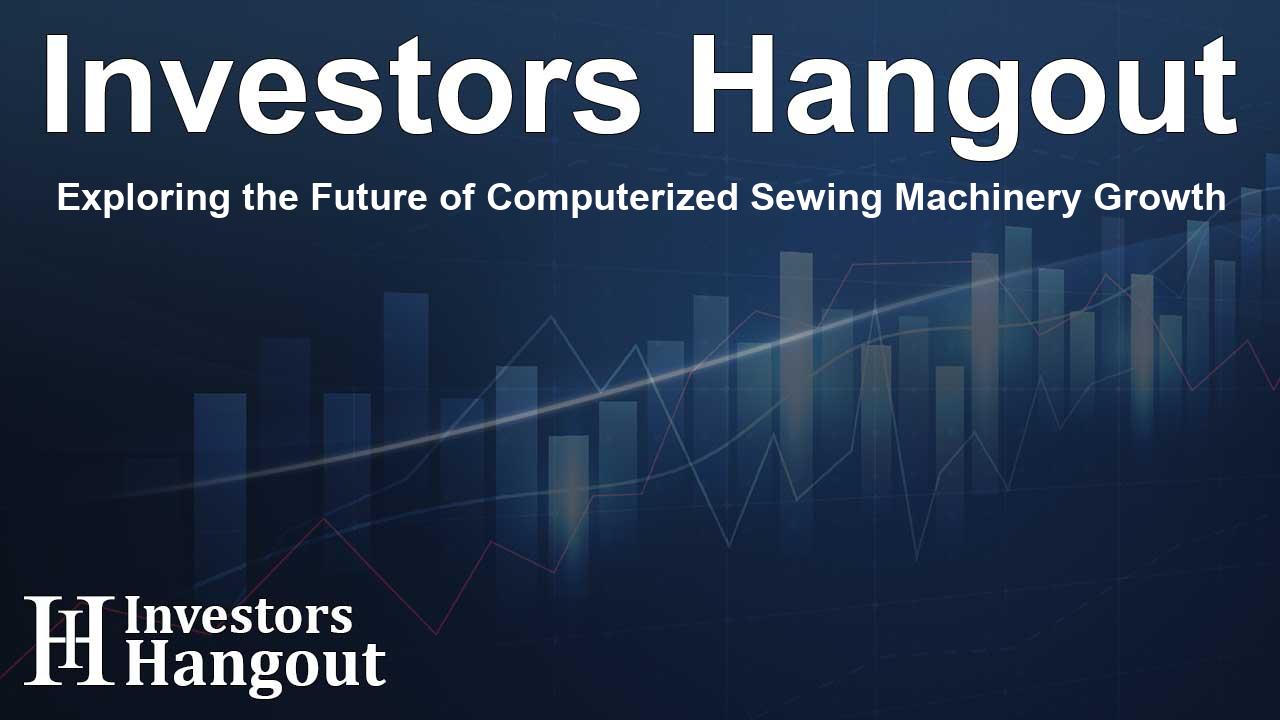Exploring the Future of Computerized Sewing Machinery Growth

Emerging Trends in the Computerized Sewing and Embroidery Machine Market
The computerized sewing and embroidery machine industry is evolving rapidly, predicted to experience substantial growth in the upcoming years. With the market valued at USD 2.2 billion, it's set to expand at a compound annual growth rate (CAGR) of 4.8%, ultimately aiming for a remarkable USD 3.6 billion valuation. This significant surge can be attributed to technological advancements, increasing automation in textile production, and an escalating demand for personalized and customized solutions.
Technological Innovations Driving Market Expansion
The rise in automated solutions across the fashion and textile industries plays a pivotal role in reshaping the marketplace. These advanced computerized machines include features such as artificial intelligence for error detection, Internet of Things (IoT) connectivity, and cloud-based design storage. The integration of these functionalities is transforming industrial and personal textile production alike, creating a seamless experience for manufacturers and hobbyists.
Increased Demand for Personalized Solutions
One major driving factor is the growing consumer demand for customized products. From unique fashion pieces to bespoke home decor, today's consumers prioritize individualized options, pushing industries to adopt high-tech sewing and embroidery machines to cater to these preferences.
Market Overview and Segmentation
Modern sewing machines offer built-in programming capabilities, LCD touchscreens, and a plethora of design patterns. These machines not only simplify tasks but also empower users to create complex embroidery applications effortlessly. They find extensive use across various sectors, including apparel manufacturing, home textiles, automotive upholstery, and arts and crafts.
Competitive Landscape
Key players such as Brother Industries, Janome Corporation, Bernina International AG, Juki Corporation, and Singer Sourcing Limited are crucial in this landscape. These renowned brands invest significantly in research and development, continuously innovating to introduce cutting-edge features that redefine user experience and operational efficiency.
Market Trends and Innovations
Several noteworthy trends are influencing the computer sewing market. The incorporation of AI technology enhances stitching accuracy and optimizes thread tension, while touchscreen interfaces and wireless capabilities allow users to design and upload presets directly from their mobile devices. Furthermore, eco-conscious consumers are aiding the rise of sustainable sewing machines, which utilize energy-efficient motors and eco-friendly materials.
Key Drivers of Growth
Industry growth is propelled by advances in automation, which streamline operations and enhance productivity. With a focus on sustainable textiles, these machines align with global initiatives seeking to reduce operational carbon footprints and minimize waste. As digital technologies improve accessibility and efficiency, entrepreneurs are empowered to produce tailored products to meet rising market demands.
Regional Market Dynamics
Asia Pacific remains the top region for computerized sewing and embroidery machines, favored by a robust manufacturing infrastructure and supportive regulatory frameworks. China, India, and Japan lead in both production capacity and consumption availability, further aided by government initiatives like 'Made in China 2025'. This setup not only addresses local needs but also strengthens export capabilities to North America, Europe, and beyond.
Conclusion: A Bright Future for the Sewing Machine Market
The future of the computerized sewing and embroidery machine market aligns with the simultaneous growth of consumer demands for personalization and efficiency in production. As manufacturers continue to innovate, we can expect an exciting evolution in how textiles are created, combining skillful craftsmanship with advanced technology.
Frequently Asked Questions
What is the projected market value for computerized sewing machines in 2035?
The market is expected to reach USD 3.6 billion by 2035.
What is the current market size for computerized sewing machines?
The market stands at USD 2.2 billion as of the latest evaluation.
What factors drive growth in the sewing machine industry?
The industry is driven by advancements in automation technologies, alongside increasing consumer demand for customized sewing solutions.
Who are the leading manufacturers in this sector?
Key players include Brother Industries, Janome Corporation, and Singer Sourcing Limited among others.
What technological trends are shaping the sewing machine market?
AI-driven features, touchscreen interfaces, and sustainable manufacturing practices are crucial trends reshaping this market.
About The Author
Contact Olivia Taylor privately here. Or send an email with ATTN: Olivia Taylor as the subject to contact@investorshangout.com.
About Investors Hangout
Investors Hangout is a leading online stock forum for financial discussion and learning, offering a wide range of free tools and resources. It draws in traders of all levels, who exchange market knowledge, investigate trading tactics, and keep an eye on industry developments in real time. Featuring financial articles, stock message boards, quotes, charts, company profiles, and live news updates. Through cooperative learning and a wealth of informational resources, it helps users from novices creating their first portfolios to experts honing their techniques. Join Investors Hangout today: https://investorshangout.com/
The content of this article is based on factual, publicly available information and does not represent legal, financial, or investment advice. Investors Hangout does not offer financial advice, and the author is not a licensed financial advisor. Consult a qualified advisor before making any financial or investment decisions based on this article. This article should not be considered advice to purchase, sell, or hold any securities or other investments. If any of the material provided here is inaccurate, please contact us for corrections.
